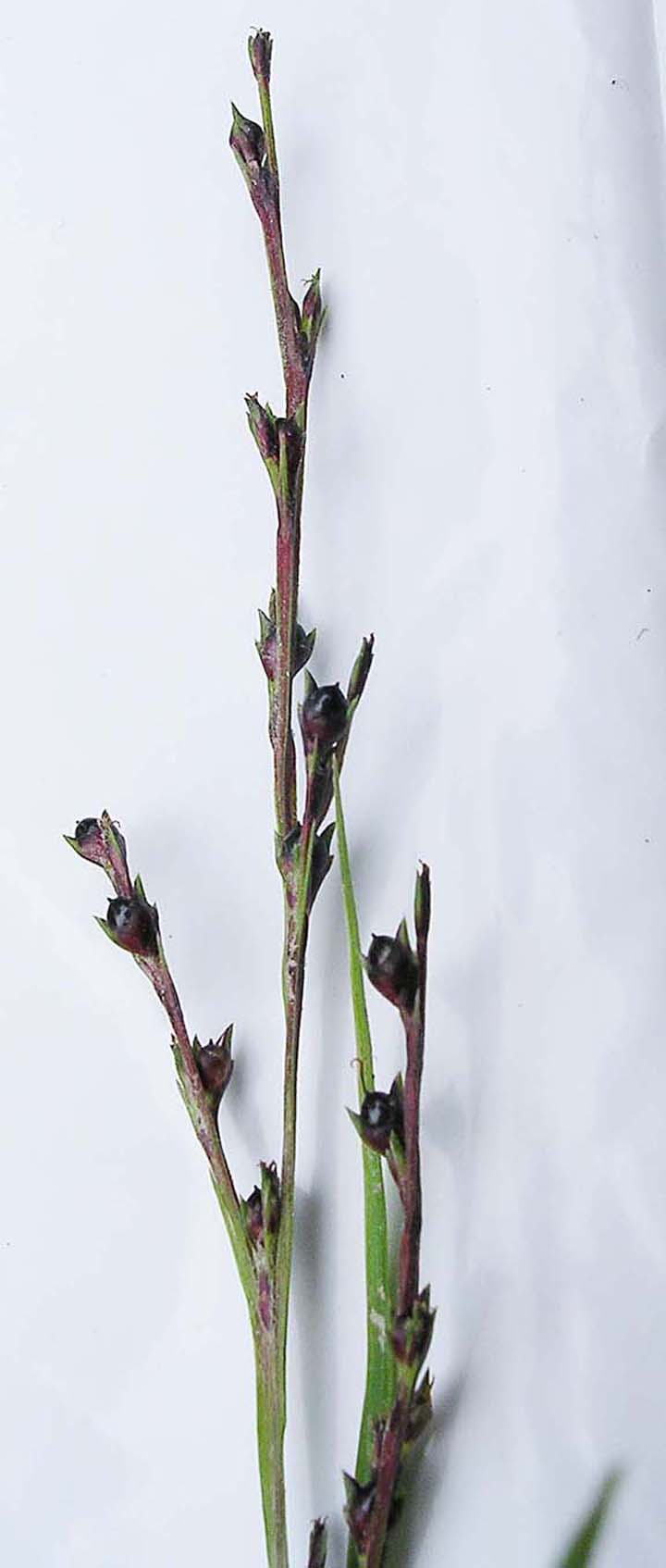- Home
- Search
- Images
- Datasets
- Sample Use
- How to Cite
- Additional Information
- About NEON
- NEON Data Portal
- ASU Biocollections
- About Symbiota
|
Family: Cyperaceae |
Herbs usually perennial, sometimes annual, cespitose or not, rhizomatous or not. Culms solitary or not, unbranched proximal to inflorescence, trigonous, (6-)10-100(-125) cm (high-climbing into trees), weak or wiry. Leaves few to many per culm, cauline, 3-ranked; sheaths present; ligules usually well developed, sometimes obsolete; blades well developed (or rudimentary, sometimes absent on proximal leaves), shorter than, equaling, or overtopping culms, plane, keeled, or revolute, 0.5-9 mm wide, stiff, with prominent midvein, glabrous, scabrous, or pubescent. Inflorescences terminal, often axillary, sometimes pseudolateral, panicles, spikes, or 1 or more capitate or fasciculate clusters; spikelets 1-100+; bracts 1-3, ascending or erect, bristle-shaped, awl-shaped, or leaflike, sometimes appearing to be continuation of culm, 10-150 mm, shorter than or exceeding spikelets, glabrous or ciliate. Spikelets: scales 3-10+, each subtending flower, distichous, proximal 2-4 scales empty, proximal fertile scale pistillate, distal fertile scales staminate or sometimes empty; occasionally some spikelets entirely pistillate or staminate. Flowers unisexual; perianth absent; stamens 1-3; anthers 2-4 mm, apex usually mucronate or awned; styles linear, 2-3-fid, base deciduous or persistent, hypogynium rudimentary or prominent, slender or enlarged. Achenes trigonous or rounded, 1-4 mm, smooth, tuberculate, verrucose, or reticulate, occasionally pubescent. Unusual structures provide important taxonomic markers in Scleria, necessitating some specialized terminology. The hypogynium is a peculiar, hardened disc at the base of the achene. In some species the hypogynium forms a prominent collar, while in others it is an inconspicuous ridge around the point of attachment of the achene. Before the achene abscises, the hypogynium is attached to a concave disc, the cupula, which remains with the inflorescence when the achene is shed. The contra-ligule (sometimes called the ligula) is a membranous flap on the rim of the leaf sheath on the opposite side from the blade. Contra-ligules are present in some other genera of Cyperaceae; their structure is seldom used taxonomically outside Scleria. Scleria vaginata Steudel, native to Central and South America, was collected once as an adventive in southern Florida, where it is an aggressive vine over two meters. The hypogynium is well developed but lacks tubercles, and the achene is smooth, shining, and gray or purplish.
Fls unisexual, the plant monoecious; spikelets small, the staminate few-fld, the pistillate with the lower scales empty and only the uppermost one fertile; perianth none; stamens 1-3; style trifid; achene bony or crustaceous, usually white or whitish, globose to ovoid or obscurely trigonous, obtuse or apiculate, in our spp. subtended by a simple or variously ornamented disk (hypogynium); sedges with trigonous culms and solitary or few, small, compact cymes. 200, warm reg. Gleason, Henry A. & Cronquist, Arthur J. 1991. Manual of vascular plants of northeastern United States and adjacent Canada. lxxv + 910 pp. ©The New York Botanical Garden. All rights reserved. Used by permission. |


